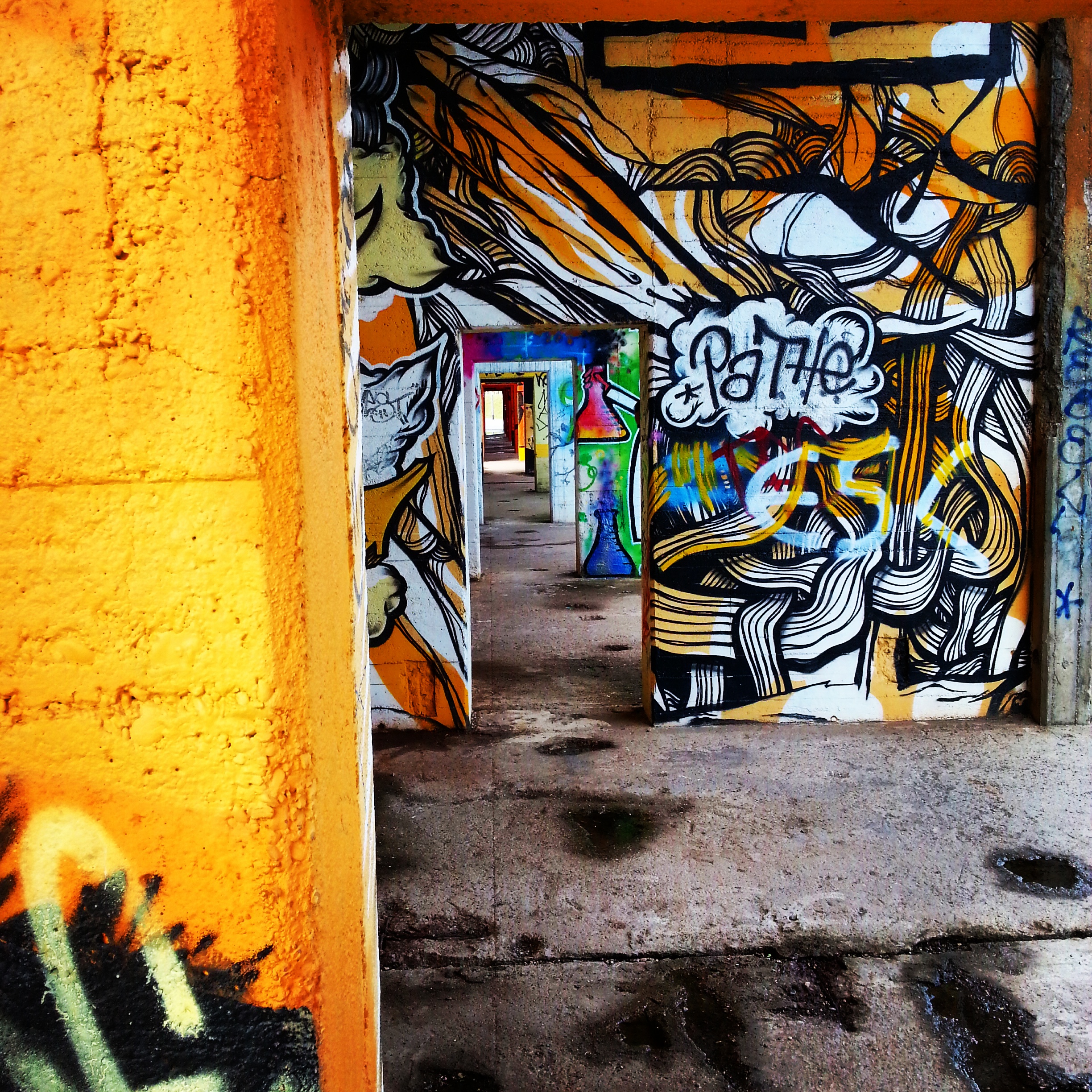
During my day trip to Duisburg, I discovered an interesting, surprising and – dare I say it – pretty underrated gem.
To understand Duisburg, you have to know a little bit about its reputation here in Germany. A heavily industrial area, the city’s largest claim to fame is being home to the largest in-land port in the world. Not exactly something you’d stick on a tourism poster…
In fact, it seems safe to say that Duisburg could be compared to British destinations such as Hull, Wigan or Doncaster – if you were to say you were going, the resounding response would be: “why?”
But go we did. And luckily, we had a fantastic guide on-hand to show us around.
City centre
Arriving at Duisburg Hauptbahnhof from Dusseldorf, you could be forgiven for having misgivings about the place. The approach to the city was perfectly summed up by my travelling companion as ‘grey’, and the 1960s town centre does little to prove otherwise.
However, the main drag is home to a colourful statue which is supposed to portray a bird saving the life of a woman. Hmm. Apparently the city is colloquially known for accepting statues other cities won’t accept…
In the city centre you can also find the hipster café fino (obviously spelled with a lowercase ‘f’), which was our first stop. The interior is minimal but nice (they are currently undergoing renovation) and their cake selection was impressive. Unfortunately their knowledge of tea is typically German – I was given Earl Grey under the guise of ‘black tea’ and was served it in a glass. However, they do have a lovely little seating area outside that seemed popular with the city’s yummy mummies.
Tiger & Turtle Magic Mountain
Next up was one of the best piece of public art I’ve seen. But what is the Magic Mountain?
To sum it up, it’s basically a giant rollercoaster sculpture that you can walk on. It’s located on the top of an artificial hill, meaning it offers amazing views (all the way to Dusseldorf!), while making itself a very striking symbol. I’m told the structure is also impressive at night, when it’s lit up by LEDs found under the handrail.
So why is it there?
The sculpture was constructed as part of the Ruhr area’s tenure as European Capital of Culture back in 2010. The design was the winner of a competition to find a landmark for the top of the hill, Heinrich Hildebrand Höhe. The area itself was greened over in 2005 after nearly a century of zinc production on the site, which had had a huge impact on the local environment. The artificial hill is made up of soil and rubble from the former zinc smelter.
Despite my fear of heights, the cold and the whipping wind, I really, really liked it. It’s perfect for taking some arty (and pretty cringe) photos – and you can check out some of mine below.
You can also click here to check out a video of what a ride on the sculpture might look like.
And why is it called Tiger & Turtle? God only knows.
How to get to there:
From the main station, take the 903 tram to the stop Tiger & Turtle.
The Rheinpark
Heading back towards the city centre, our next stop was the imaginatively-named Rhine Park, which – you guessed it – it located next to the Rhine River.
The area was formerly home to industry, the relics of which can still be seen today. Nowadays, however, the area is a flat grassy expanse for recreation, with a skatepark and a small artificial beach – oh, and lots and lots of graffiti.
Adjacent to the beach on the banks of the Rhine, you’ll find a lovely little café called Ziegenpeter am Rheinpark. ‘Ziegenpeter’ is the German name for Peter the Goatherd from the Heidi stories. Apparently it is also German for ‘mumps’, but regardless, the café serves up a lot of tasty dishes containing goat’s cheese, including a delicious Flammkuche with goat’s cheese and pear slices which I devoured for lunch.
They serve up some tasty cakes, too.
How to get to the Rheinpark:
Take the 903 to Marienhospital.
Finkenkrug
After the Rheinpark, we headed back across town to Finkenkrug, a pub just north of the main station, where we spent a few hours.
Calling this place just a ‘pub’ actually feels a little bit disrespectful – in fact, the place is more like a Mecca for beer lovers. The place has an extensive menu totalling almost 40 pages, filled with beers (and a few ciders) from around the world, including an extensive collection from the UK & Ireland.
I opted for the very masculine Pink Panther on recommendation from a friend, before enjoying my first Brothers strawberry cider in months. It was bliss.
If you’re wondering where to eat in Duisburg, the place also serves up some cracking burgers, I’m told.
There is also a slightly terrifying feature about the Gents’ toilets – the urinal trough features a full-length mirror, and pressure pads ensure a disco ball turns on whether someone stands at the trough.
How to get to Finkenkrug:
Take the 901 tram to Schweizer Strasse, from where it’s a 6-minute walk down Sternbuschweg.
Landschaftspark
Another unique feature of Duisburg is the Landschaftspark (or ‘landscape park’). While the name might conjure up images of a manicured lawn, a thicket of trees or a beautiful lake, Duisburg’s Landschaftspark is actually a former coal and steel production site, which was abandoned in 1985.
Sounds picturesque, doesn’t it?
The site was opened to the public in the early 1990s and was designed with the novel idea to help people better ‘understand the industrial past.’
At night, the former power plant becomes a light installation, with the structures illuminated with colourful lights. Unfortunately my camera and my own amateur photography skills weren’t enough to capture the scene in its full effect, but you can sketch out my attempts below.
The place itself is actually fascinating – the structures are impossibly big and incredibly intimidating. The site definitely seemed popular during our night-time visit: the structures were buzzing with amateur photographers and their tripods, as well as a night-time tour wielding hardhats and headlamps.
Somehow, my friends managed to convince me to climb to the top of the furnace-turned-observation-deck in gale-force freezing winds. It was dark, so I couldn’t fully appreciate how high up I was (there’s no way they’d have got me up there during the day), but it felt a lot like the Buffy the Vampire Slayer episode ‘The Gift’ when Buffy has to reach the top of a poorly constructed tower to save her sister…
Back on solid ground, I was left with the strong urge to come back during the day. The buildings are beautifully lit up at night, but it’s hard to appreciate the sheer scope of the site. (There’s also a cool slide and some hammocks you can sit in during the day).
In summer, the grounds are also home to a partially open-air cinema, where the local Duisburg philharmonic orchestra plays the film’s accompanying score live. Pretty amazing for a former coal plant…
How to get to Landschaftspark:
Take the 903 tram (again) to the stop Landschaftspark Duisburg-Nord, from where it’s five-minute walk to the site.
Lasting impressions
There you have it: how to spend a very busy day in Duisburg. So – has my impression of Duisburg changed? Definitely.
Despite its less-than-stellar reputation as a tourist destination, Duisburg turned out to be arguably the best daytrip I’ve done from my base here in Dusseldorf. The city has a lot of things to do, with a great deal of unique sites to offer the local tourist.
While its city centre might not be anything to write home about, it’s a really easy city to get around. And what’s more, I’m told there are some brilliant lakes just outside the city which are great for whiling away a sunny summer day.

















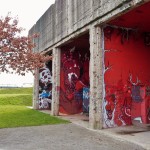

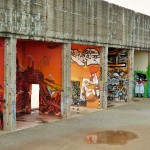
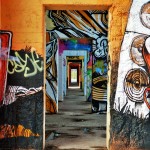
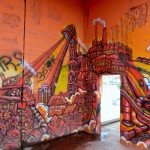
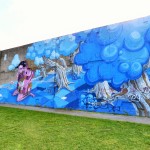
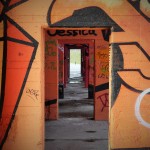
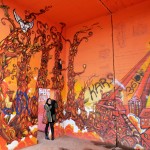













Funnily enough my first ever trip to Germany was to Duisburg, circa 1989 – not the most obvious destination but my uncle was stationed near there in the army. Can’t say I remember much about it but it looks like there are some cool things to see now – the Magic Mountain looks impressive, what happens to the pathway on the upside-down bit!?
It stops before it tips over. Yay.
Haha, that’s what everyone asks, but there is a barrier to stop you attempting to defy gravity. Interesting you’ve visited before though – though from what I gather most of the places I mentioned are only a few years old.
“Stadtlandschaft 903”, which means such as “urban landscape 903” is a photobook along the tram 903 in Duisburg: http://www.gunwalt.de/blog/blog/2012/06/stadtlandschaft903/
Thanks for the tip!
What a quirky place.
Like Lucy, I was wondering as well, just how do you walk through the inverted section of the Magic Mountain?
There’s a gate on both sides to stop you from trying but according to our guide, that is the most commonly asked question…
You don’t, it is restricted and blocked by a little fence.
Hi there,
and thank you very much for writing this review abour your visit of my hometown, Duisburg. I was very pleased to read that you actually visited some spots that are worth seeing! Most of the people coming to Duisburg from further away almost only visit the “Innenhafen”, a former part of the in-land port which is now transfered into a spot with lots of restaurants and bars. It’ a nice place, but, as you have written above, there are so many others really worth to be seen and visited! Hopefully, due to your article, some other people will come here and have a closer look at the history of the city. And, last but not least, I was slightly amused to read the part about the “Finkenkrug” – my favourite pub as well. You should have tried the “St. Louis Premium Kriek”, by the way 😉 Maybe next time?
I’m glad you liked the article, Philipp! My friend has lived in Duisburg for two years so she’s managed to scope out the nice places – she made a great tour guide as I’m sure you can see! As for Kreek, I’ve tried that before but I was very happy to have some fruit cider again – it’s so hard to buy in Germany!
Your photos and travelogue are stunning! Your writing makes me want to board the next plane…
And how heart-stopping is that roller coaster structure!
Thanks for letting us dream of far away locales… You make them closer!
Thanks for the kind words, Lia – glad you enjoyed it!
Awesome photos, John! Loved that roller coaster structure, although that video you posted made me dizzy and I was kinda hoping he’d walk on the upside down part as well, lol. What was the manly Pink Panther like? 😉
Haha, there’s a gate to stop you walking on the upside down part. That and you know, GRAVITY 😛
And the manly Pink Panther was incredible manly. You wouldn’t have handled it.
Nice post. I never knew Duisburg was this interesting. The only thing I knew about was the Landschaftspark. I have to definitely check this city out some more 🙂
I’m glad you liked the post – Duisburg definitely ranks highly for a day trip in my eyes.
I have to say that what you said sounds like a line from the Things That Have Never Been Said segment from Conan O’Brien’s show. However, your post and photos prove Duisburg is well worth a visit. So thanks for posting 🙂
I absolutely love the idea of a place accepting works of art that other places reject. There should be a museum dedicated to that! Also, that flammeken thing with pears looks PERFECT.
Bit off topic, but have you heard of the Museum of Broken Relationships in Zagreb? Very cool idea, I think you’d like it.
Oh, and as for underrated cities, I love Brussels 🙂 And MOSCOW! (bc as a Russian I have heard literally at least a million times while abroad: “Oh I would LOVE to visit Russia. Saint Petersburg is so gorgeous!!!”
Don’t worry, I have something on Underrated Cities and Moscow planned very soon…! I totally agree though, the flights from London are DIRT cheap but none of my friends are going!
Your blog is amazing! I’ve never heard of Duisburg until today, and its definitely in my list of ‘places to go’ now!
Duisburg is gorgeous, John. It is beautiful even at night.